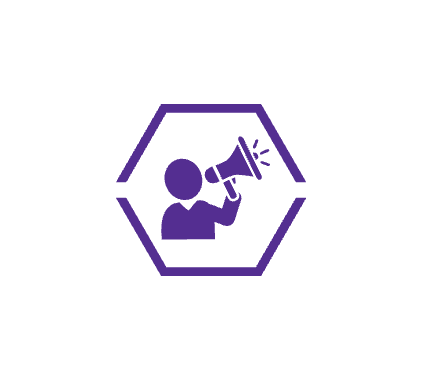Case Study Mastery: 5 Top Tips for Success

Companies love to talk about their products and benefits, but concrete examples of how solutions or services have brought success to customers from different industries — otherwise known as a case study — is gold-dust.
Case studies are hard proof of a particular solution or service’s impact and an excellent tool to generate leads and convert prospects into buyers. Indeed, there is no better way of demonstrating how customers can get results with a specific solution than with a case study that speaks to a particular use case. Producing a first-hand customer testimony is invaluable for selling all kinds of products and services. One survey of B2B marketers ranked case studies as the most effective content format, with 66% of respondents identifying them as “very effective.”
However, building these customer stories is easier said than done. Not only can it be hard to cull and curate quotes and find customers willing to spend time recounting their experience, but it also requires a specific writing style. In the worst cases, a poorly written case study could even undermine your efforts to attract new customers and harm relationships with existing ones.
With that in mind, let’s look at five top tips to keep in mind to create an impactful customer case study for your marketing portfolio.
Carefully Choose Your Customer Case Study
When choosing a specific customer project to showcase, it’s best to choose an example that highlights a strong link between their own success and your product. While this may sound obvious, convincing customers to tell their stories and participate in case study creation is half the battle, and the most data-driven, impactful stories are the ones that are most likely to leave customers feeling grateful and enthusiastic enough to partake.
A case study should be a “before and after” snapshot of the aspects of your customer’s business that have evolved, transformed, or improved thanks to your solution. Keep in mind that the goal of a case study is to convince prospects that your product can help them reach their goals, so orienting your use cases to target your ideal customer is critical. The goal is to ensure that your case study will show prospective customers that you have experience in their industry and know how to produce targeted results for their use case.
By highlighting a key use case in this way, prospects will find it much easier to see how your product could help them with their own business challenges.
Create an Engaging Narrative
The most engaging case studies are compelling accounts told firsthand by the customer. When interviewing your customer, focus on questions that will help form a powerful narrative. What challenges were they facing? What was their journey to overcome them, and how did your services or solutions aid in that transformation?
It’s important to remember that while a case study is about your business, it shouldn’t be all about yourself. Instead, ensure your customer is the hero of the piece. By showing how your customer went from point A to point B, from having a pressing problem to solving it with your product, prospects can better envision how you could help them on their own journey. Be sure to include citations from the customer to illustrate the journey wherever applicable for maximum impact.
Case Study Quality Over Quantity
According to one study, 43% of readers skim content rather than reading it in full, meaning many don’t have the time or attention to digest a three-page case study. That’s why it’s vital to emphasize quality and impact over long-winded detail, whether leveraging visual aids or creating a longer-form case study. In this example produced for one of our clients, key statistics are presented up front, the structure clearly delineates issues, changes, and results, and the content is informative and concise.
Don’t obsess over word count; inflate your case study with unnecessary words. Instead, prioritize visuals like charts or images where appropriate, and use clear headers and bulleted lists to make the content easy to read and understand, even for skimmers.
Make It Relatable
Case studies enable you to humanize your brand and show how you connect with your customers. When interviewing a customer, ask them to expand on their relationship with you through questions like:
- What sets our solution apart from potential competitors?
- How did we help you to achieve your goals?
- What was your experience like working with us?
- How did other employees integrate/respond to the solution?
By doing so, you’ll find it easier to craft a narrative that helps prospects put themselves in the shoes of the customer, making it easier for them to understand how they could benefit from those same products or services. Choosing the right pull quotes is critical here.
Moreover, highlighting emotional benefits, as well as hard numbers, helps readers see that your goal is not only to help with immediate needs but also to ensure long-term results.
Use Data to Highlight Results
Including facts and statistics about your customer’s business boosts your credibility and your readers’ confidence. Avoid unqualified statements about the strength of your offering and instead include high-impact statistics from your customers, like return on investment (ROI), productivity increases, and cost savings.
One effective choice is to highlight or separate key numbers for maximum impact, such as including charts, graphs, or screenshots of dashboards or analytics. This not only provides specific, accurate numbers that make the story both more credible and more convincing, but it also helps ensure even the laziest reader is drawn to proof points that can help build your case.
There is, however, a danger of overindulging in statistics to the point of boring your audience with a piece of content that looks more like a spreadsheet than a case study. Instead, focus on a few key statistics that help tell the story.
Showcase Your Customers’ Success
By now, you should have a good idea of how to best relay your customer stories‘ and how to showcase the role of your products and services in helping customers achieve their goals. Recounting these cases in the form of an engaging and effective narrative begins by choosing the right use cases and asking the right questions. Drawing on both concrete stats and human emotion to deliver firsthand customer accounts is the secret sauce to delivering credible, convincing, and impactful case studies for your website.
A well-written case study is a powerful way to win-over wavering prospects. But following this checklist is just the beginning. Choosing the right format, creating attractive graphics, and reaching a broad audience are all important factors to consider once the foundation is built. Partnering with a marketing team can help you make the most of your existing relationships and transform them into compelling content that attracts new customers to your business.
To learn more about how Instinctive Solutions can help you create compelling case studies, visit our case study page.

 Content Marketing
Content Marketing Messaging and Positioning Accelerator
Messaging and Positioning Accelerator Guest Expert Speaker
Guest Expert Speaker Reviews and Testimonials
Reviews and Testimonials Success Stories
Success Stories News, Awards & Recognition
News, Awards & Recognition Blog
Blog Podcast
Podcast